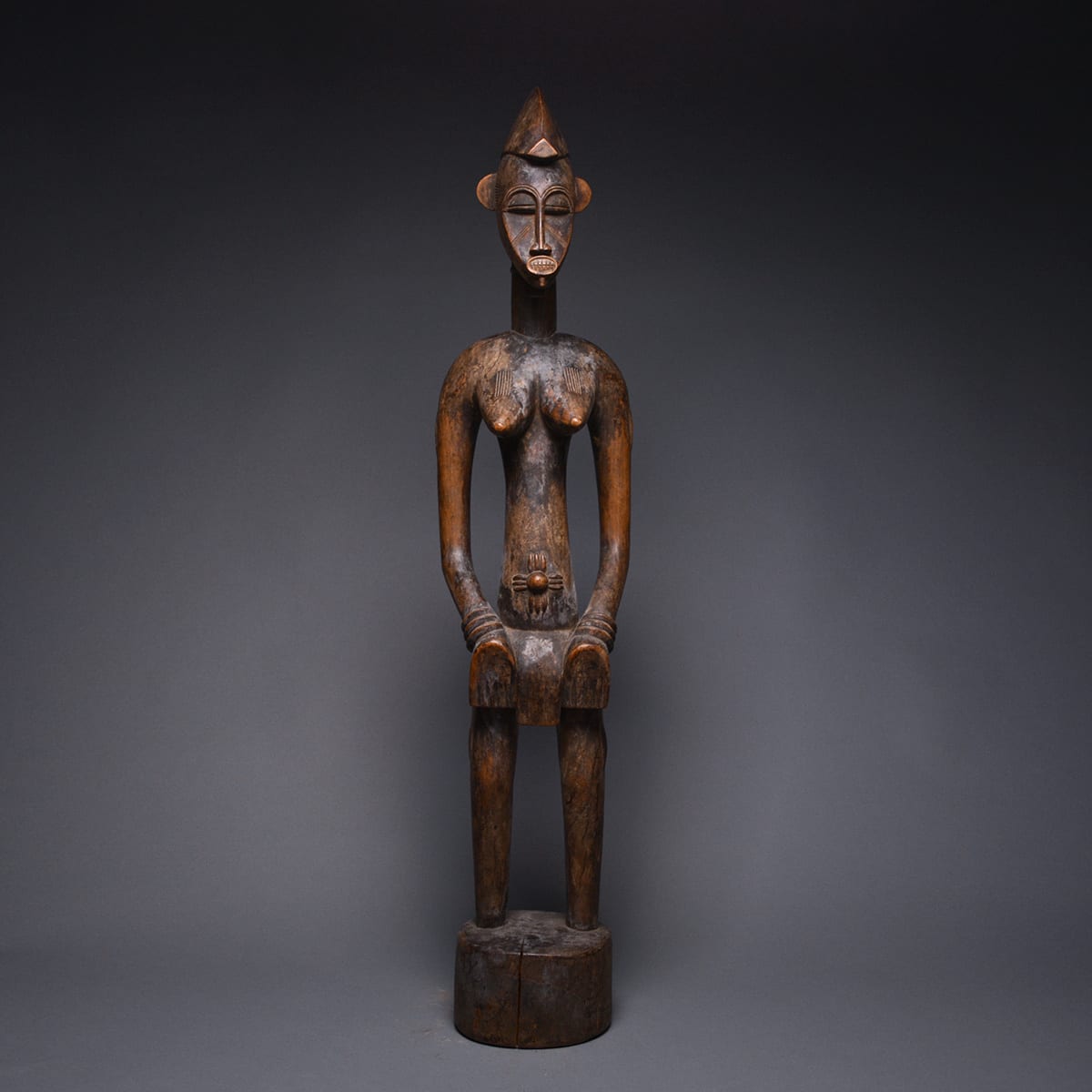Female Senufo Wooden Pombilele Rhythm Pounder, 20th Century CE
Wood
height 106 cm
height 41 3/4 in
height 41 3/4 in
PF.6029
Further images
Among the most famous statues of African art are a series known as the Pombibele, “those who give birth.” This large sculpture, appropriately enough in the form of a woman,...
Among the most famous statues of African art are a series known as the Pombibele, “those who give birth.” This large sculpture, appropriately enough in the form of a woman, would have been used during the funeral ceremonies of Poro members, a male "secret" society, headed by the village elders, where the sacred knowledge of manhood is transferred to young initiates. In the southern Senufo area, these statues are carried and then pounded on the ground, providing rhythm for the dancers.
This sculpture is the representation of an idealized woman. Her elongated, sinuous forms are based upon the ideals of femininity. Her face appears like a typical Senufo mask with its semi-circular eyes, arched brows, pointed chin, and protruding mouth with exposed teeth. Ritualistic scarifications are evident on her temples, cheeks, and chin, as well as her breasts, arms, legs, and most prominently on her navel. The ritually inflicted scars were considered marks of beauty and surely enhance this woman’s stature, as do the bracelets wrapped around her wrists and her elaborately groomed coiffure sculpted in the form of a stylized crest. The woman’s physical stature reveals her inherent fertility, most noticeable in her large conical breasts and protruding navel. The forms and composition of the figure are just the beginning of its beauty. For in this work, form and function are intertwined and inseparable. Funeral ceremonies, while generally somber occasions, can also become celebrations of life, as is implied by this sculpture. We can hear the beat of its pounding, we can picture the dancers, we can sense something greater than our eyes behold.
This sculpture is the representation of an idealized woman. Her elongated, sinuous forms are based upon the ideals of femininity. Her face appears like a typical Senufo mask with its semi-circular eyes, arched brows, pointed chin, and protruding mouth with exposed teeth. Ritualistic scarifications are evident on her temples, cheeks, and chin, as well as her breasts, arms, legs, and most prominently on her navel. The ritually inflicted scars were considered marks of beauty and surely enhance this woman’s stature, as do the bracelets wrapped around her wrists and her elaborately groomed coiffure sculpted in the form of a stylized crest. The woman’s physical stature reveals her inherent fertility, most noticeable in her large conical breasts and protruding navel. The forms and composition of the figure are just the beginning of its beauty. For in this work, form and function are intertwined and inseparable. Funeral ceremonies, while generally somber occasions, can also become celebrations of life, as is implied by this sculpture. We can hear the beat of its pounding, we can picture the dancers, we can sense something greater than our eyes behold.









